Blood cannot be produced in a lab or anywhere else. It only has one source — volunteer donors. In Hawai‘i alone, 200 donors are needed every single day, yet only 2 percent of Hawai‘i’s population are donors. You can help save lives by learning how easy it is to donate blood and host a blood drive.
The Need Never Decreases
The mission of Blood Bank of Hawaii (BBH) is to provide a safe and adequate blood supply for all the civilian hospitals throughout the state to meet patients’ needs. Each and every day patients count on volunteer donors. One in seven people entering the hospital will need blood.
 BBH Donor Services Director Fred McFadden has been in the blood banking field for over 17 years, starting as an account manager.
BBH Donor Services Director Fred McFadden has been in the blood banking field for over 17 years, starting as an account manager.
BBH is open daily, because 150 to 200 blood donors are needed every day. Because blood is perishable, says Fred, every donation contributes to our community’s ongoing needs. The need for donations never decreases; at certain times of the year, it actually increases.
There are seasonal dips in donations, says Fred. “Roughly 12 to 13 percent of the blood we collect annually comes in from high school blood drives. Combined with colleges, that’s about 20 percent of the blood we collect every year. During the pandemic, these students were not on campus, where the drives are usually conducted. That is also why we see dips in donations during the summer months and during the holidays.”
People are also distracted during the holiday season and often travel during the summer months, and not prioritizing blood donation.
“This put a strain on the blood supply during those times,” says Fred. “That is why January has been designated as National Blood Donor Month — a time to recognize the importance of giving blood and honor the donors who make BBH’s life-saving mission possible.”
Safety Factor
The blood supply is the safest it’s ever been due to multiple layers of safety nets built into the process.
“We do everything we can to keep both the donor and the recipient safe,” says Fred.
BBH follows strict US Food and Drug Administration (FDA) and Association for the Advancement of Blood & Biotherapies (AABB) donation procedures. State-of-the-art blood bags are used for collections and adequate iron levels are verified through technology. BBH uses physical distancing protocols and requires that donors and staff wear masks.
The eligibility requirements themselves help keep donors safe, including the donor history questionnaire, which is part of the screening process. But volunteer blood donation is key to keeping our blood supply safe, as there is no motivation to hide information. The questionnaire screens out people who may be in the higher risk category.
Then, of course, all blood products go through extensive testing, including screening it for HIV and other diseases that can be transferred through transfusion, prior to it being distributed to hospital partners. Blood that is positive for any of these diseases is destroyed and by law, the blood donor is notified that there is something of concern that they should know about.
Fear Factor
A recent study by Ohio University psychologists has discovered a key reason that people are fearful about donating blood. It’s not the needles. It’s not the pain. It’s not even the sight of blood. It’s a fear of fainting.
The reality of people fainting before a donation is less than 4 percent; less than 1 percent faint during or after a donation. Better public education could dispel these and other fears.
“If, through education, we can show them what their donation actually does, that knowledge can override an aversion to needles, a fraction of a second of a pin prick and other fears potential donors might have,” says Fred.
Although fainting rarely happens at blood donation, there are some preventative measures that ensure you will be in top condition to donate. Donors can best prepare by eating iron-rich foods, such as lean meat and dark-green vegetables. “Of course, this is important at all times for good health, but certainly in the weeks and days leading up to your appointment,” says Fred.
 Fred says, simple steps can lessen the chance of any type of negative reaction.
Fred says, simple steps can lessen the chance of any type of negative reaction.
“First, we require folks to have had a very good meal prior to donation,” says Fred. “That is key. We do not want someone to donate on an empty stomach. We also want you to be fully hydrated. Drink 8 to 10 glasses of water before donating. And part of that is avoiding caffeine prior to your donation. Also, get a good night’s sleep the day before your appointment.”
The human body circulates between six and 12 pints of blood, depending on body size. The standard 500ml donation (about one pint) removes a significant volume, so after donating, BBH recommends donors resting for about 15 minutes, and consuming a drink and snack before leaving. The meal and hydration are also important post-donation actions.
Time Factor
Another reason why people say they don’t donate is the time factor. But the entire process for a whole blood donation only takes about 1 hour. The actual collection of a typical donation takes only 5 to 8 minutes.
And that is the reason BBH has convenient fixed sites in dense population areas as well as regularly scheduled blood mobile pop-ups in Windward, Waikele and other areas. “Part of the convenience is going to where people gather,” says Fred. “And what is more convenient than where they work?”
A minimum number of donors is needed in order for business leaders to become BBH partners and host a drive. BBH works with a “champion” on-site — anyone at any level of an organization with a heart to serve their community and save lives through blood donation — who forms committees to gather eligible participants, and get them to sign up and make an appointment. BBH has an online appointment calendar donors can use or the committee can make appointments for their volunteers.
“So instead of coming to the blood bank, if you have a large enough group and a committed committee of people to make it a success, we can work with them and host a drive on site,” says Fred.
Pre-pandemic, a larger percent came in through these mobile blood drives. During the pandemic, a greater number of people come to the centers or pop-up locations. “But we still need those mobile blood drives because that is where the vast majority of new blood donors come from,” says Fred.
Yet even beyond the fear and time factors, the No. 1 reason people don’t donate is that they’ve never been asked. Mentioning your donation lifestyle to a friend or family member and inviting them to join in the life-saving mission is imperative to keeping a healthy and robust blood supply.
Donor Benefits
In addition to knowing you have saved lives with your donation, there are additional benefits. The donor starts by filling out a questionnaire, then a phlebotomist reviews the responses and conducts a mini-physical, which includes checking blood pressure, temperature and hemoglobin levels to ensure donors are in good health and can safely donate blood.
 For the safety of the bank, post donation reports describe the condition of the blood, determining whether it is usable by the bank. For example, one of the main causes of deferral is low hemoglobin.
For the safety of the bank, post donation reports describe the condition of the blood, determining whether it is usable by the bank. For example, one of the main causes of deferral is low hemoglobin.
Your red blood cells contain hemoglobin, a molecule comprised of protein and iron, which carries oxygen to the body tissue and gives blood its red color. Giving a pint of blood requires starting at a high-normal hemoglobin level so that your blood count will remain in the normal range after you have donated.
The most frequent cause of low hemoglobin is an iron-poor diet maintained over an extended period of time. Low hemoglobin doesn’t necessarily mean you’re sick
or anemic, but in rare cases where hemoglobin count is abnormally low, donors are advised to consult their doctor.
You can help build your hemoglobin level by eating a consistent diet of foods that contain iron. Download BBH’s brochure (www.bbh.org/wp-content/uploads/2020/04/AGuideToHemoglobin_112016.pdf) to find out about foods that will keep your blood in donor-ready condition.
“So many of the things in our hospitals that we think of as routine now — from baby’s being born through C-section, to organ transplants, colonoscopies and heart surgery — all rely on blood being available at the time the procedure is done,” says Fred. “Many physicians will not start a procedure unless blood is ready and waiting in the operating room just in case it’s needed.”
“I think we take it for granted because blood banks do their jobs to make sure an adequate supply is available, but of course, we could not do it without blood donors and the organizations that hold blood drives,” says Fred.
A whole blood donation is about 1 pint or 1 pound of blood. Your one pint donation can save three lives. If whole blood is broken down into three components — red blood cells, plasma and platelets — each component could go to three different individuals.
You can spare 1 pint easily. Your body has an amazing capacity to replace all the cells and fluids that have been lost. Your body will replace the blood volume (plasma) within 48 hours. It will take four to eight weeks for your body to completely replace the red blood cells you donated
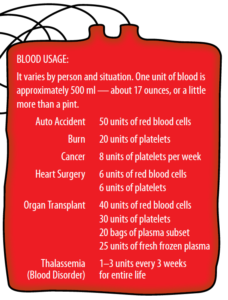 Duration, Types & Frequency of Donations
Duration, Types & Frequency of Donations
“Ideally, donors give the blood products needed the most based on their blood type, body type, hospital need and eligibility,” says Fred.
Donors can give whole blood, which contains red blood cells, plasma and platelets. Processing after the donation extracts specific blood components. Whole blood can be donated once every 56 days (about two months). Platelets can be donated once every two weeks (on O‘ahu, only at the Young Street Center).
During automated collections called MAX donations, specific blood components are collected via a machine with a built-in centrifuge and remaining components are returned back to the donor (similar to dialysis). These donors have some additional height and weight requirements, and the process takes a bit longer.
With the MAX program, you are giving specific components.
“With whole blood, we are taking almost a pint of what flows out of your body,” says Fred. “During a MAX donation, we are taking only certain components. If we are just taking 2 units of red cells, then instead of being eligible to donate whole blood in 56 days, it extends that to 112 days before you can donate again. For example,
O-minus — the universal donor — is such a small percentage of the population and even a smaller percentage of them donate.
The ABCs & Os of Blood Typing
Blood is a living tissue that circulates through arteries and veins, delivering oxygen to every part of the body. Your blood type is inherited. Blood typing is universal. Donating blood is one of the ways people find out their blood type. Blood typing is always conducted before a patient receives a blood infusion.
 Although all blood is made of the same basic elements, not all blood is alike. There are four major human blood groups A, B, AB and O, which are determined by the presence or absence of two chemical markers, or antigens “A” and “B” on the surface of red blood cells. This classification of human blood types is known as the ABO Blood Group System.
Although all blood is made of the same basic elements, not all blood is alike. There are four major human blood groups A, B, AB and O, which are determined by the presence or absence of two chemical markers, or antigens “A” and “B” on the surface of red blood cells. This classification of human blood types is known as the ABO Blood Group System.
There is another surface antigen called D or Rh, the presence or absence of which makes a blood group positive (+) or negative (–). These are known as sub-types or sub-groups.
![]() About 6 percent of the population on the mainland has A¯ type blood. In Hawai‘i, Rh-negative blood types are half as common, with A¯ making up only 2.6 percent of Hawai‘i’s donor population.
About 6 percent of the population on the mainland has A¯ type blood. In Hawai‘i, Rh-negative blood types are half as common, with A¯ making up only 2.6 percent of Hawai‘i’s donor population.
![]() A+ is the second most common blood type both in Hawai‘i and the mainland.
A+ is the second most common blood type both in Hawai‘i and the mainland.
![]() This type makes up only 0.8 percent of Hawaii’s donor population.
This type makes up only 0.8 percent of Hawaii’s donor population.
![]() This blood type is much more common among Asian populations. So it makes sense it’s prevalent here. Even here with lots of B+ donors, sudden high usage of B+ results in unexpected shortages.
This blood type is much more common among Asian populations. So it makes sense it’s prevalent here. Even here with lots of B+ donors, sudden high usage of B+ results in unexpected shortages.
![]() As a universal donor, anyone can receive your blood. In an emergency when there’s no time to match the blood type, you save the day. On the mainland, 7 to 8 percent of the population has O¯ blood; in Hawai‘i, only 3 percent. As the universal red blood cell donor, you can help everyone, but only O¯ donors can help you. Which is also why those with O¯ blood types are always needed! Also, your red blood cells are safest for newborn infants with under-developed immune systems.
As a universal donor, anyone can receive your blood. In an emergency when there’s no time to match the blood type, you save the day. On the mainland, 7 to 8 percent of the population has O¯ blood; in Hawai‘i, only 3 percent. As the universal red blood cell donor, you can help everyone, but only O¯ donors can help you. Which is also why those with O¯ blood types are always needed! Also, your red blood cells are safest for newborn infants with under-developed immune systems.
![]() This is the most common blood type in Hawai‘i and is always in high demand. Because your red cells can be given to anyone with a positive blood type, your red cells are more impactful than your platelets or plasma. For O+donors, the need for your blood changes with patients’ needs. Depending on the day you come in, you may be asked to donate platelets and/or plasma. You want as many O+ donors also donating so there is blood on the shelves should you need it. As an O+donor, you can only receive O type blood.
This is the most common blood type in Hawai‘i and is always in high demand. Because your red cells can be given to anyone with a positive blood type, your red cells are more impactful than your platelets or plasma. For O+donors, the need for your blood changes with patients’ needs. Depending on the day you come in, you may be asked to donate platelets and/or plasma. You want as many O+ donors also donating so there is blood on the shelves should you need it. As an O+donor, you can only receive O type blood.
![]() In Hawai‘i, Rh-negative blood types are half as common. AB¯ makes up only 0.4 percent of our donor population.
In Hawai‘i, Rh-negative blood types are half as common. AB¯ makes up only 0.4 percent of our donor population.
![]() In Hawai‘i, we are lucky to have a higher percentage of AB+ donors. Although it may be small in percentage, it is mighty for patients with uncontrolled bleeding, liver disease and trauma. As the universal plasma donor, your plasma can be given to anyone regardless of their blood type.
In Hawai‘i, we are lucky to have a higher percentage of AB+ donors. Although it may be small in percentage, it is mighty for patients with uncontrolled bleeding, liver disease and trauma. As the universal plasma donor, your plasma can be given to anyone regardless of their blood type.
Hawai‘i is also known for its rare blood types, in particular for Jk3¯, due to our unique population mix. Jk3¯ blood is found more in Polynesians, East Asians and Southeast Asians than in any other ethnic group in the world. Hawai‘i’s diverse racial population includes about 10,000 who carry this rare blood type, but only 110 have been identified by BBH. Of these, 18 actively donate.
“So there is a real need for an ethnically diverse blood donor base.” says Fred. “Chronically transfused — patients with Thalassemia or sickle cell anemia, for example — will develop antibodies to the antigens on blood cells. So it’s important that we try to find matches that are as close to them as possible. Sometimes that is found within the same ethnicity — but not always. We don’t see all of our ethnic groups equally committed and involved in donating blood.”
If you are wondering why you should donate blood if there are not many people with your blood type, remember, it only takes one person in need with your blood type to make it the most important. Lots of people with your blood type means your blood type is the most needed. All donations are welcome.
Donor Superstars
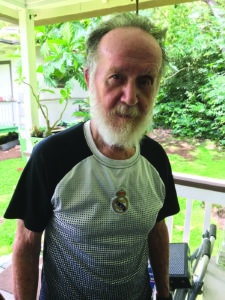 There is no age limit for donors. “In fact, our most frequent donors are seniors,” says Fred.
There is no age limit for donors. “In fact, our most frequent donors are seniors,” says Fred.
John Flanagan of Kane‘ohe, age 90 on his next birthday, is a retired Kapi‘olani Community College professor. He has made 436 donations, potentially saving over 1,300 lives.
He first began donating when he was in the military in his 20s. “In American Samoa, they had no way of storing blood, so when they needed blood, they had to get a donor immediately and I would always answer the call,” says John.
His own firsthand experience helped shape a lifetime of giving. When John was 8 years old, was hit by a car and “badly damaged.” His uncle, who was the same blood type, was patched directly to John, saving his life.
When he and his wife moved to Hawai‘i, he donated his O+ blood regularly. Soon he started donating platelets as a MAX donor at the Young Street facility. One particular phlebotomist used flattery to ensure his continued donations.
“Oh, you have very nice veins,” she said. John laughed at the recollection. Then she proceeded to explain the MAX equipment and process “in a very thorough and knowledgeable way.”
“Everybody was so happy that I was there and treated me so well that I just kept doing it.” Every time he hit a donation benchmark, 100 or 200 donations, “they
would make a big deal out of it,” John recalls. “It is a rewarding experience.”
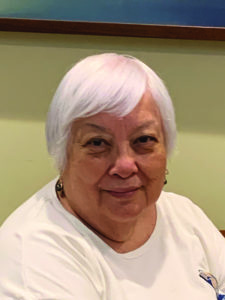 Pauline Mitchell, turning 80 on her next birthday, lives in the Salt Lake area. One of BBH’s top female donors, she has given her A+ blood 305 times, potentially saving 915 lives. She had been donating sporadically for a long time, then regularly for about 35 years, beginning when her father was badly injured.
Pauline Mitchell, turning 80 on her next birthday, lives in the Salt Lake area. One of BBH’s top female donors, she has given her A+ blood 305 times, potentially saving 915 lives. She had been donating sporadically for a long time, then regularly for about 35 years, beginning when her father was badly injured.
“Thankfully, there was blood when my father needed it.”
Later, one of her classmates had heart surgery when Pauline was giving whole blood. A coworker’s baby needed a transfusion in-utero when she was giving platelets. “I like to think that my donations helped,” says Pauline.
“Someone saved my father’s life. Someone saved my classmate’s life. Someone saved my coworker’s baby. I am grateful to them, and I know I saved lives, as well. Donating blood is a way to thank them — by giving blood to save somebody else. It takes an hour out of my life about four to six times a year. How hard is that?”
Her son has just passed the 106-unit mark at age 37. “Between us, we have given about 11 to 12 gallons of blood. “It’s become a way of life.”
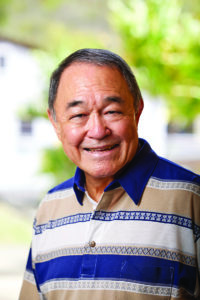 Barry Suda, 77, of Kuliouou, a Vietnam combat veteran, has donated blood since he returned from the war in the early ’70s. He began donating blood when he got a job near the blood bank when it was located at The Queen’s Hospital and eventually moved to Dillingham, then the Young Street facility. In the early days, he says, Primo Brewing would donate to the blood bank, providing a bottle of beer to each donor.
Barry Suda, 77, of Kuliouou, a Vietnam combat veteran, has donated blood since he returned from the war in the early ’70s. He began donating blood when he got a job near the blood bank when it was located at The Queen’s Hospital and eventually moved to Dillingham, then the Young Street facility. In the early days, he says, Primo Brewing would donate to the blood bank, providing a bottle of beer to each donor.
He has lost track, he says, but has given his O+ whole blood over 100 times, potentially saving over 300 lives. As the most common blood type in Hawai‘i, O+ is always in high demand.
“Blood can only come from another person,” says Barry. “You can’t make it in a lab. I’m thankful that I can donate. I just decided it’s the right thing to do. It doesn’t hurt and it doesn’t take long to donate. You feel good about it!”
Blood Drives: How, Where & When?
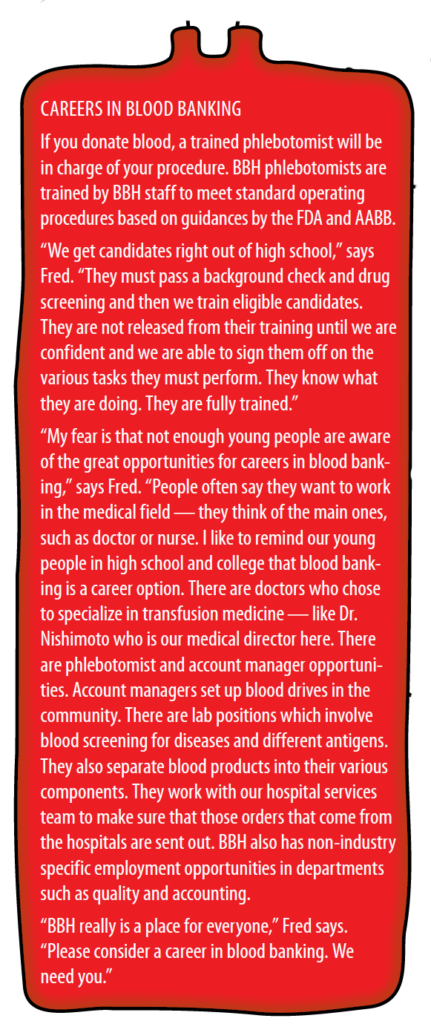 Whether you want to compete with these superstars, or just make a first-time donation to see for yourself how easy it is, go to “Become a Donor” (bbh.org/become-donor) and scroll down the list of topics that will address most eligibility questions. To calm your qualms about donating, view “What is it Like to Give Blood?” (youtu.be/tudK55JlrfA). Then make an appointment by calling 808-848-4770.
Whether you want to compete with these superstars, or just make a first-time donation to see for yourself how easy it is, go to “Become a Donor” (bbh.org/become-donor) and scroll down the list of topics that will address most eligibility questions. To calm your qualms about donating, view “What is it Like to Give Blood?” (youtu.be/tudK55JlrfA). Then make an appointment by calling 808-848-4770.
Blood is collected at fixed sites, along with bloodmobiles that travel to O‘ahu’s neighborhoods providing convenience for donors (bbh.org/about/location).
To find other blood drives being held in November and December, go to bbh.org/#blooddrive and make an appointment.
In addition to fixed sites and pop-up locations, BBH account managers work in the community organizing blood drives with businesses, places of worship, service clubs, and high schools and universities to create Community Lifesaver Clubs. There is a real need for these sponsored mobile drives. To start a blood drive, go to bbh.org/get-involved.
Time to Roll Up Your Sleeves!
Blood is needed 24/7/365. You just never know who will need it or when, but the need never ends. With only 2 percent of the population giving blood to save the lives of everybody else, even one donation can make a difference.
“It’s the blood on the shelf that saves lives now,” says Fred. “You can pick any tragedy in our nation’s history and you’ll see people in those or nearby communities line up to donate blood. The thing to remember is blood has an expiration date and it is constantly in need — not only in times of tragedy. We also need you for the organ transplants, C-sections, trauma cases, heart surgeries, cancer patients and the chronically transfused that happen every day.”
For many, the most important blood type is the one that’s needed when your loved one ends up at the hospital. So we all have a part to play. Not everyone is eligible, but even if you can’t donate, encourage someone else. Share this article.
BLOOD BANK OF HAWAII (501(c) 3 nonprofit)
1907 Young Street, Honolulu, HI 96826
808-848-4770 | bbh.org
Facebook: facebook.com/bloodbankhawaii
Twitter: @bloodbankhawaii
Instagram: bloodbankhawaii

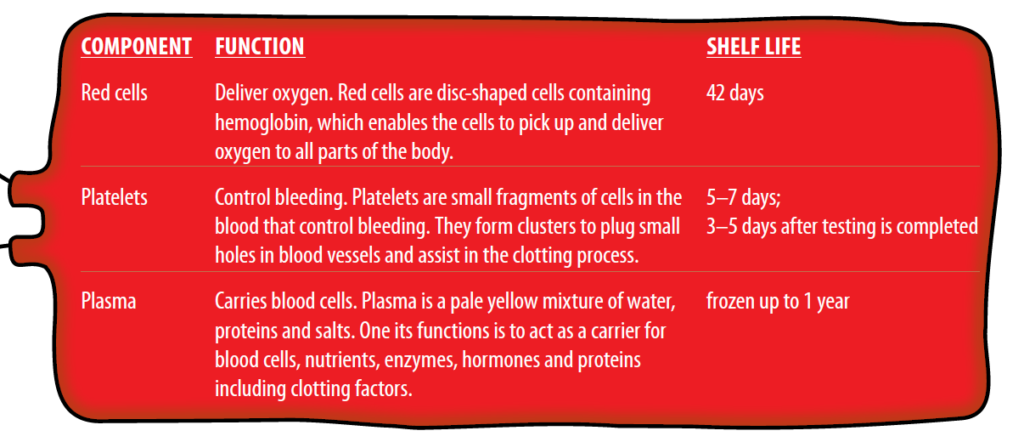

Leave a Reply